In the south of France, every kitchen had pottery, especially confit pots.
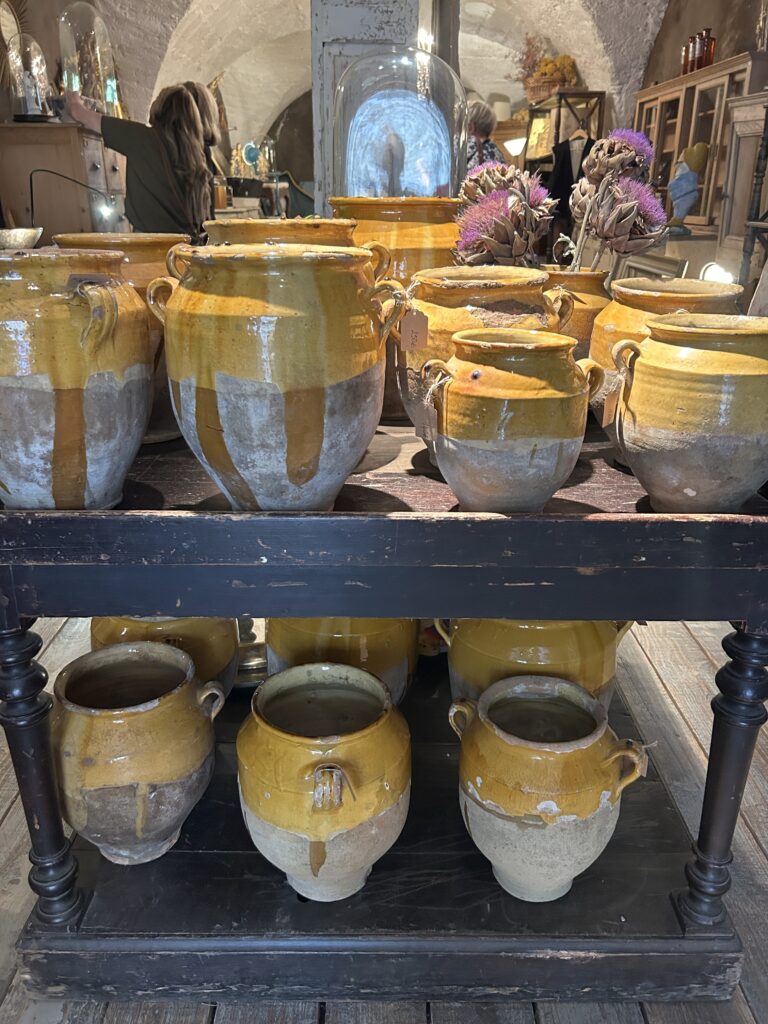
The confit pot- glazed in sun-worn ochre, green or brown tucked in a corner near the hearth. The confit pot — humble, heavy, and needed— once held what was most precious: food that would nourish through winter when the fields were bare and the days too short for gathering.
Before freezers and supermarkets, the French cooked duck or goose slowly in its own fat, then poured into these jars. The meat rested beneath a seal of protection, safe until needed. The pot’s job was simple: to preserve what mattered.
Years of heat and grease. It wasn’t decoration. It was muscle. It kept what people needed: meat cooked slow in its own fat, sealed to feed a family through winter.
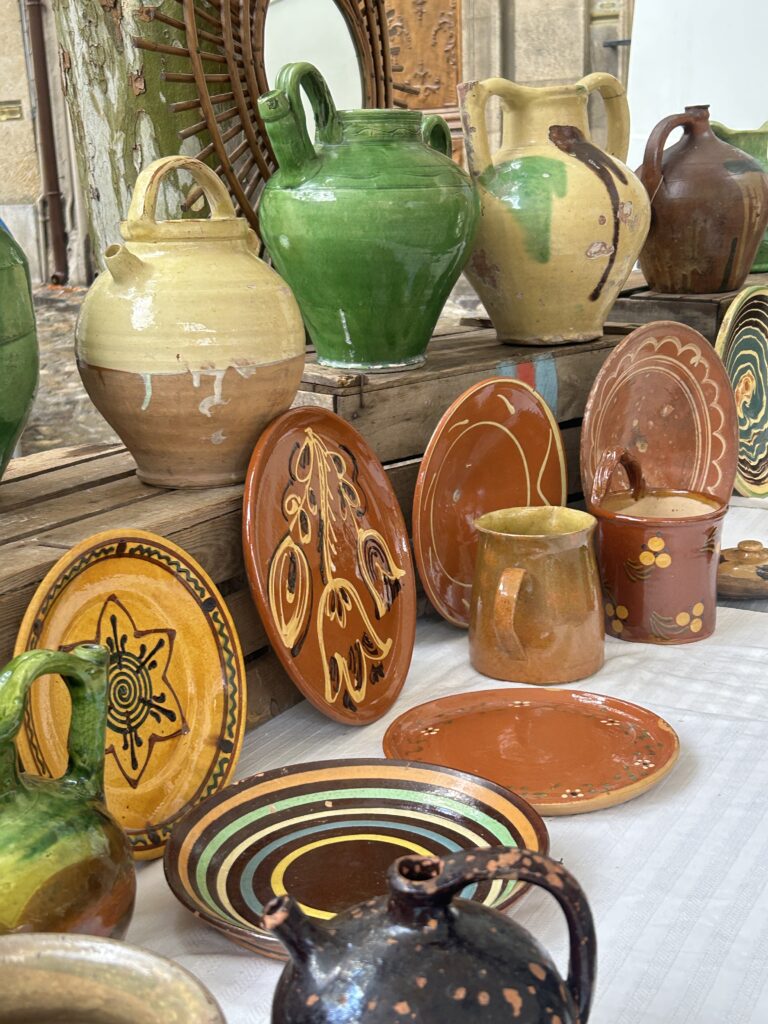
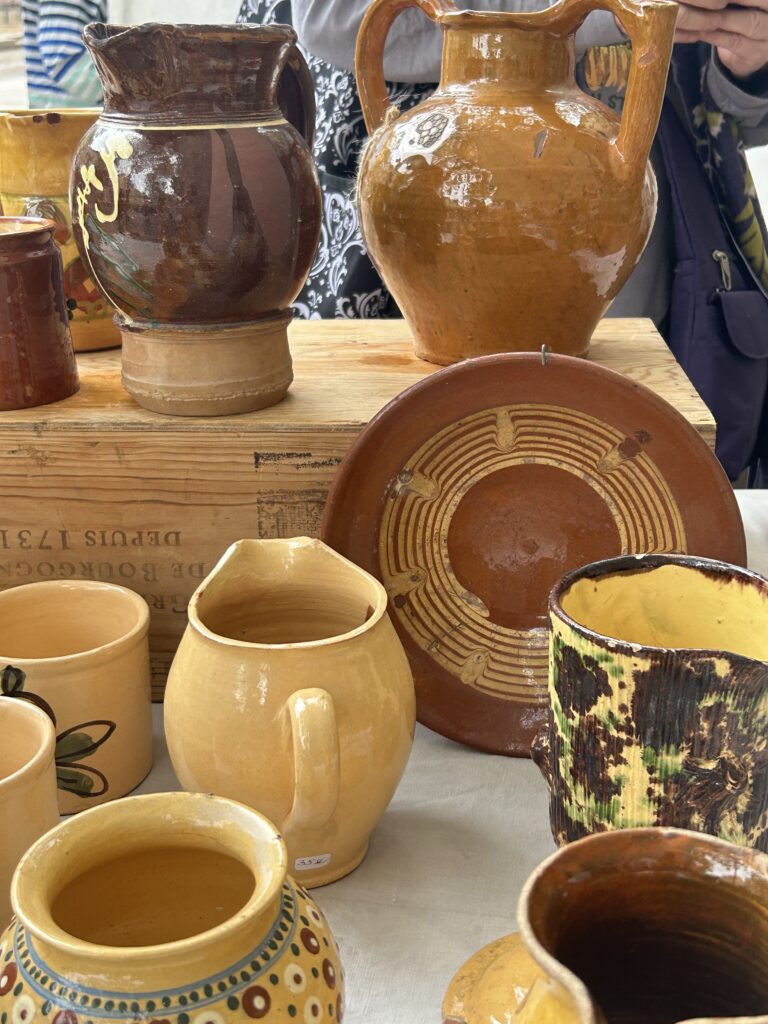
Every time I pass them, I feel a kind of kinship. We too are vessels — glazed, chipped, sometimes mended. We carry what we’ve gathered through the years: laughter, loss, recipes, and tenderness. The things that once fed us still live inside, transformed into story.
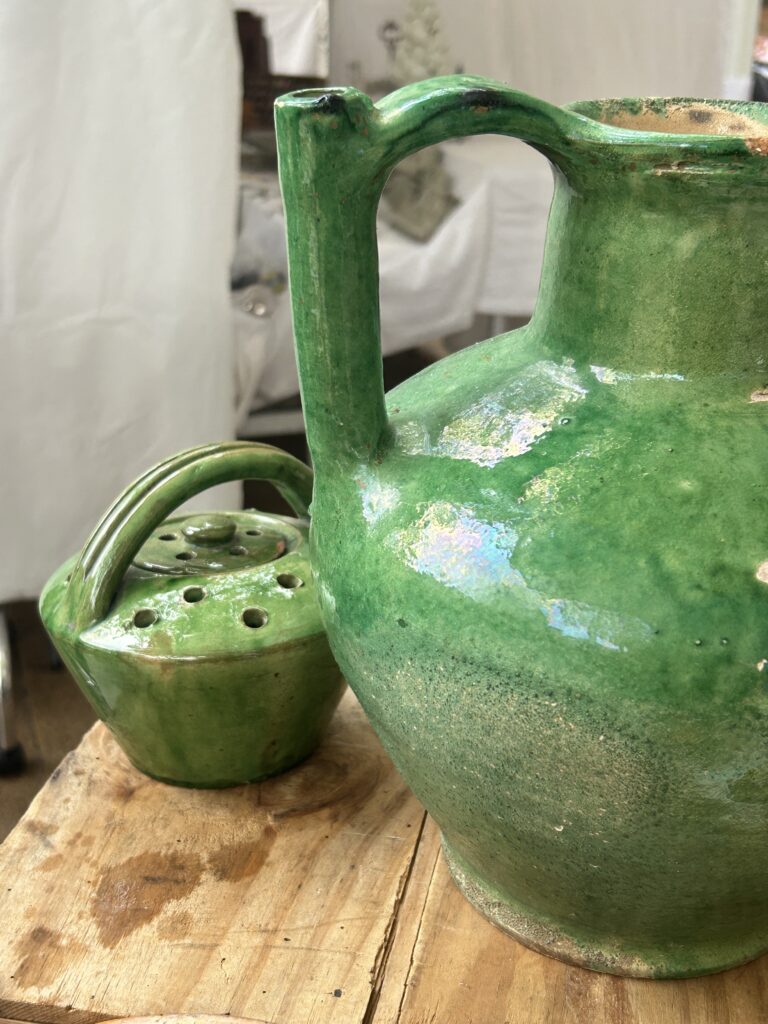
Antique pottery warmers, called chauffe-lit or bouillotte, were once an essential comfort in French homes. Before the days of electric blankets or rubber hot-water bottles, people used small earthenware or stoneware pots filled with hot water or embers to take the chill from the bed on cold nights. Some were slipped beneath the sheets to warm the linen, others set under a stool or wrapped in cloth to rest near the feet while someone sewed, read, or mended clothes by the fire.
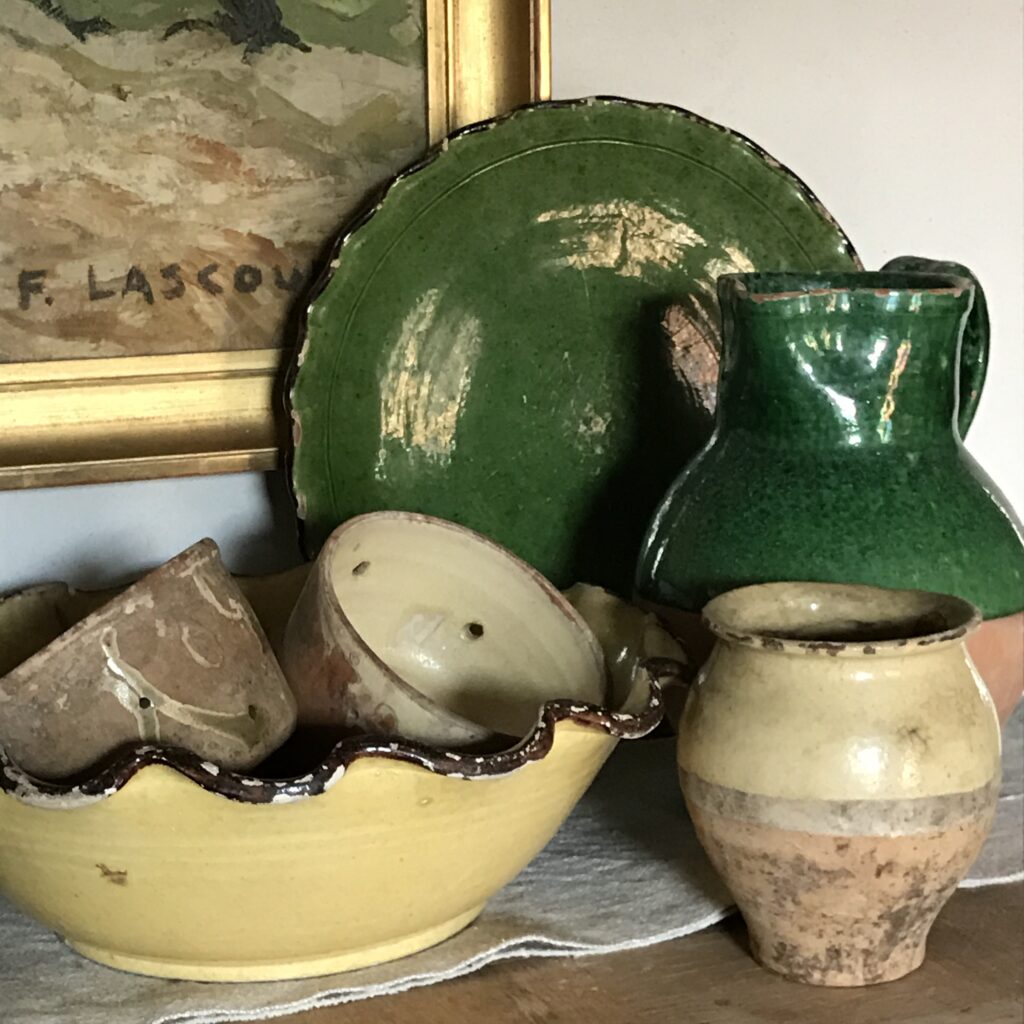
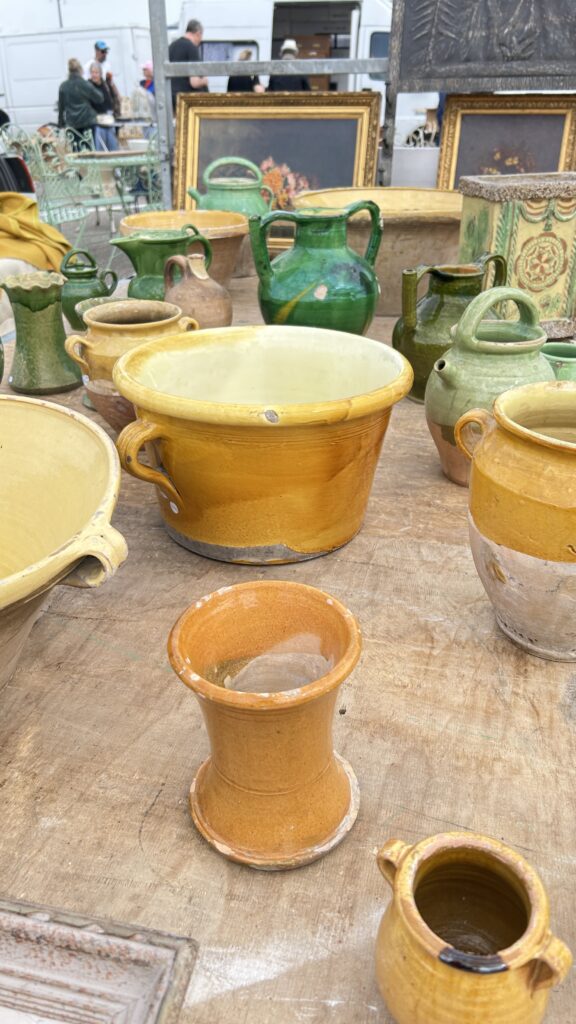
The word cruche simply means “jug” or “pitcher” in French. Traditionally, it was used to store and serve water, though sometimes it held wine, cider, or milk. In warmer months, people often wrapped the jug in linen or hemp cloth then soaked it at the river, or fountain. As the water in the cloth evaporated, it helped keep the contents of the jug cool.
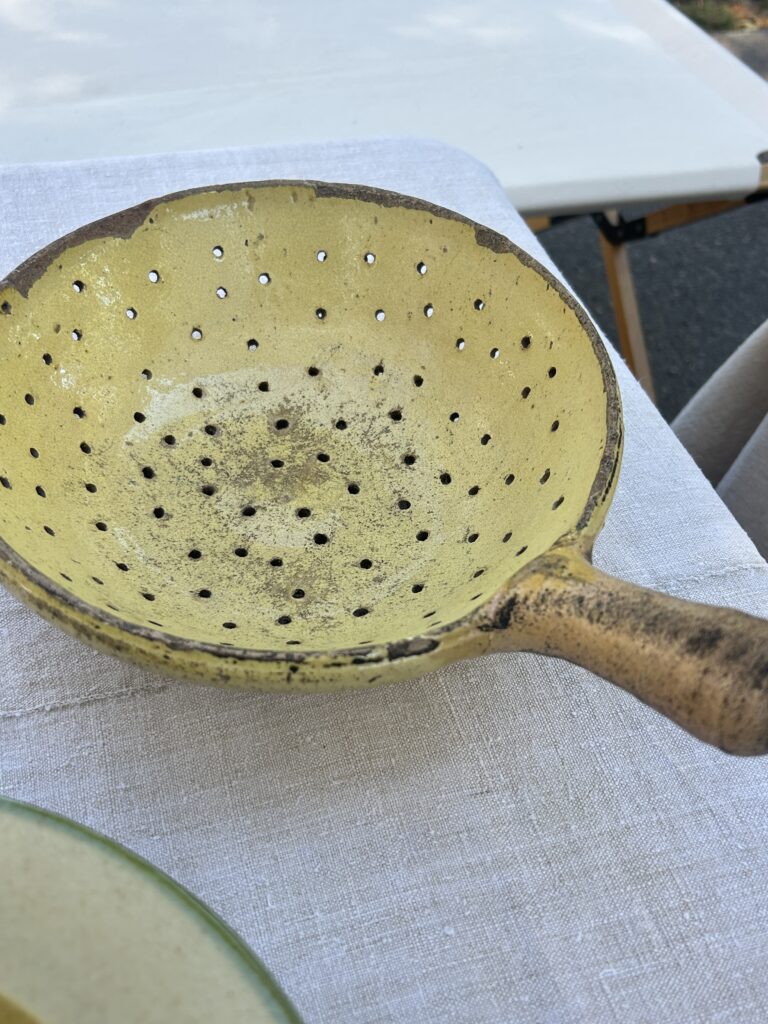
Before the 20th century, rural kitchens relied on pottery for nearly everything — storing, mixing, and straining. A pottery strainer and because a household only needed one or two, far fewer were produced than bowls or jugs. That’s why they’re harder to find —

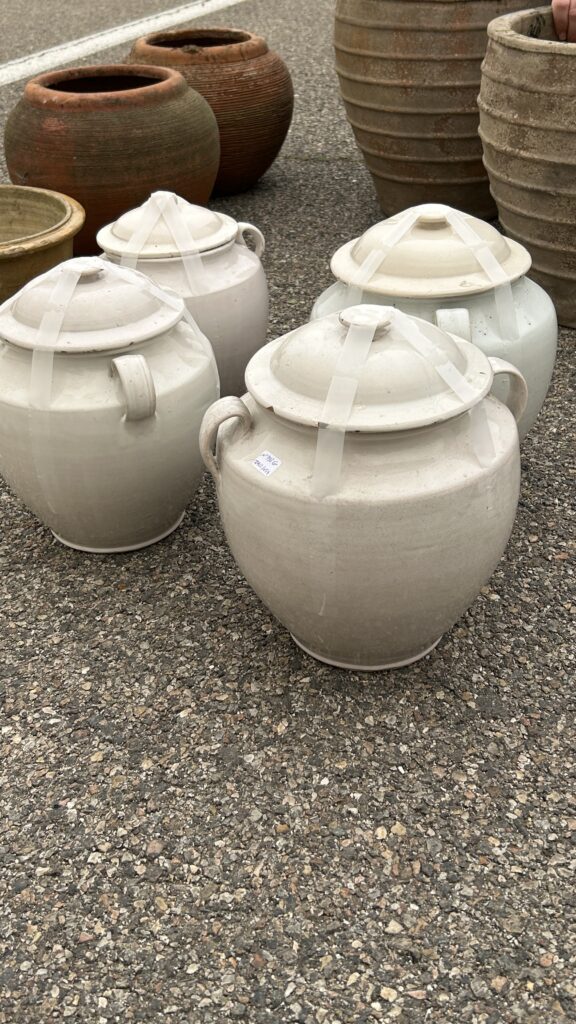
In northern France, you sometimes see confit pots glazed in white or blue. Unlike the rustic mustard ochre, or green pots of farmhouses, these were often found in wealthier homes. Fully glazed and heavier, they were practical for storing meat, butter, or preserves, but also beautiful enough to display. Owning a set of matching blue or white pots was a subtle sign of taste and status — functional, yes, but also meant to impress.

Little birds called: ortolans were caught using small traps in fields, hedgerows, or orchards. One method involved miniature clay pots placed inside small wooden cages. The clay pots helped stabilize the trap, and hold bait which would attract the birds. The cages were portable, allowing hunters to set them in areas where the birds naturally fed. Because the birds were small, the traps had to be precise, and only a few birds were caught at a time. The pots are slightly taller than two inches in height.
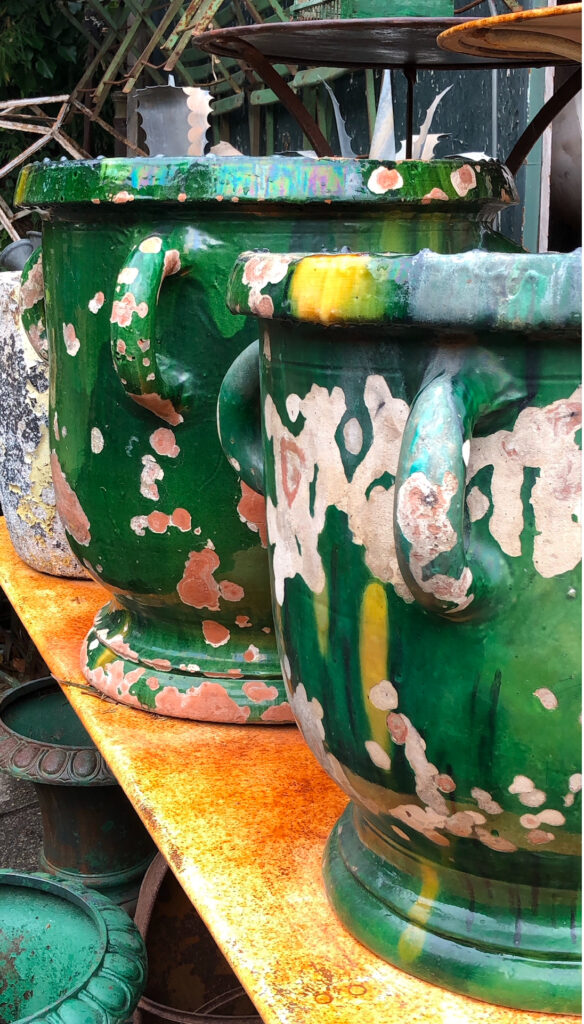
In southern France—especially regions like the town of Anduze and Castelnaudary—pottery makers in the 18th and 19th centuries produced large glazed terracotta garden pots. Anduze jardinières, often had handles, which made it easier to move citrus plants and small shrubs indoors during the winter.

“We hold a treasure, not made of gold,
In earthen vessels, wealth untold;
One treasure only-“ John Foley
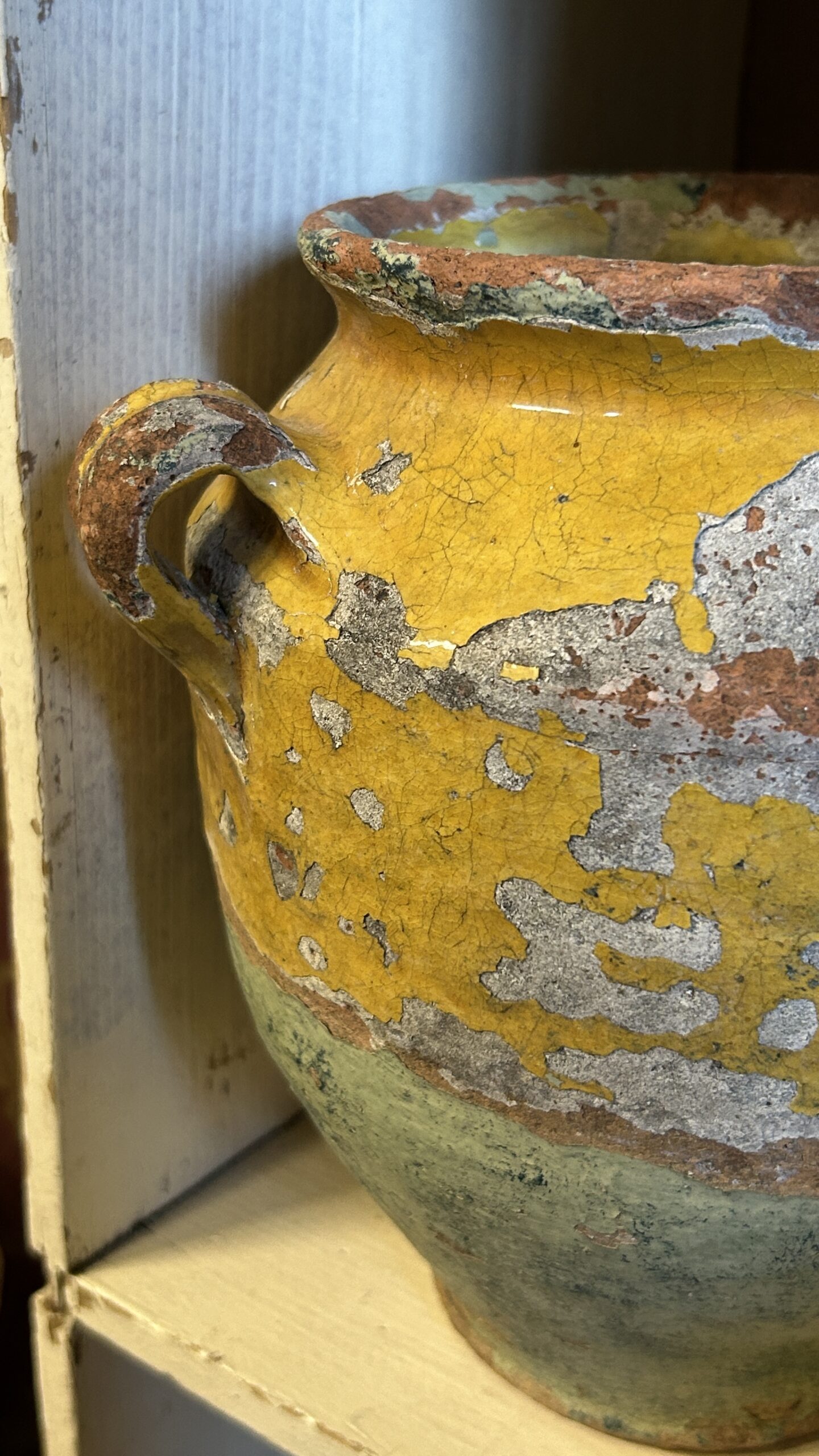

Leave a Reply to TracyH Cancel reply